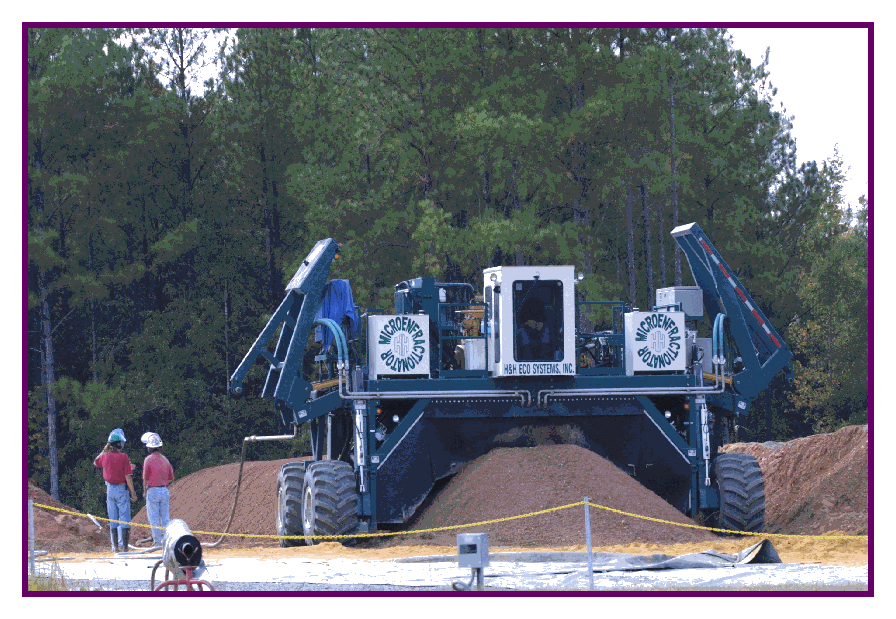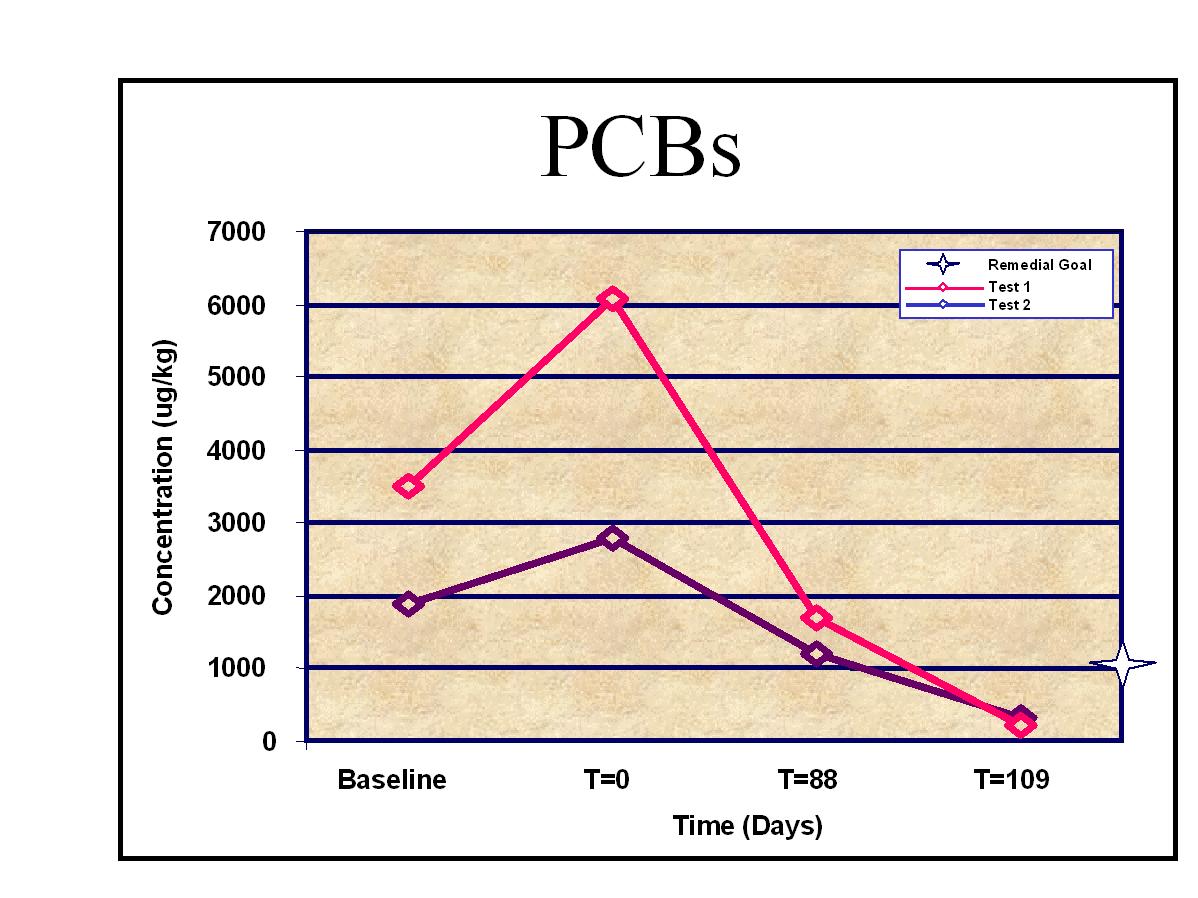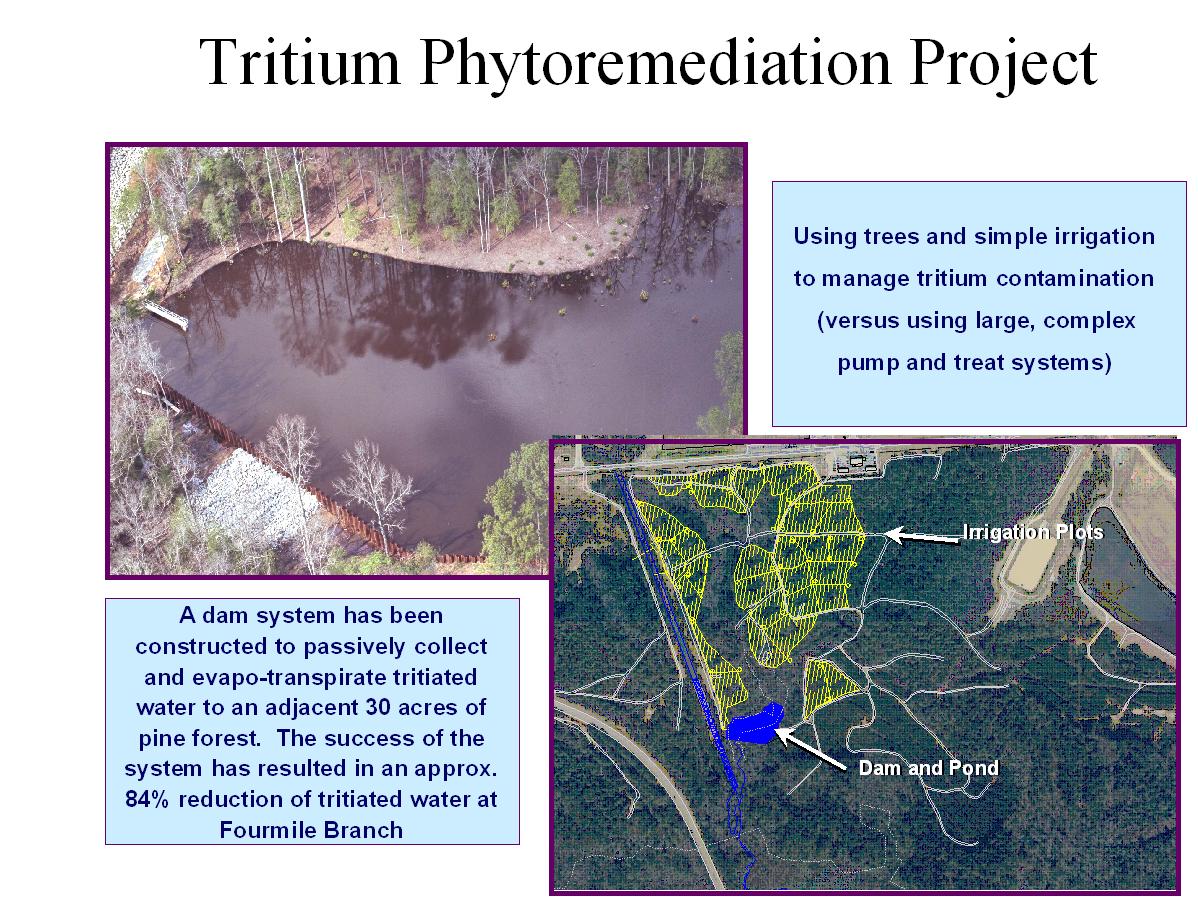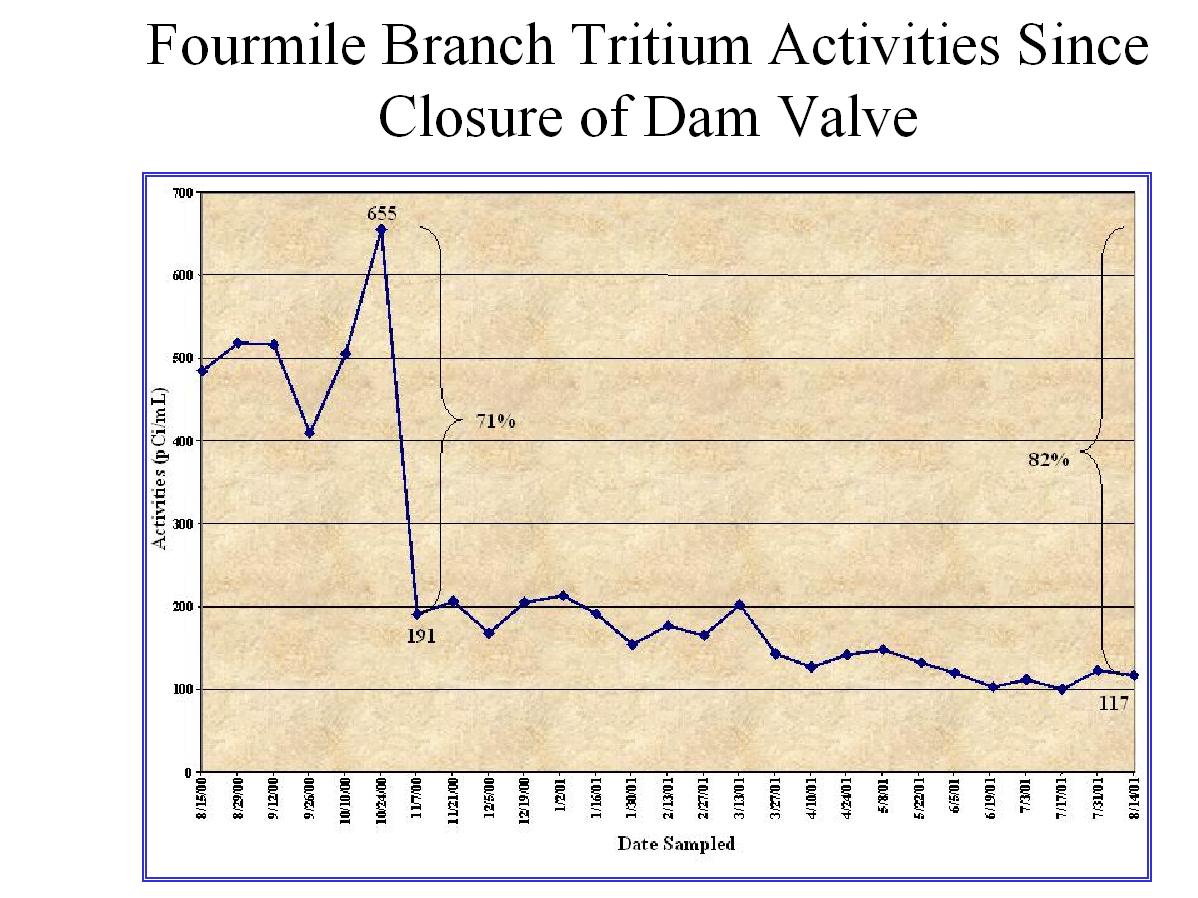
WSRC-MS-2002-00075
Natural Remediation at Savannah River Site
C. M. Lewis and R. Van Pelt
Bechtel Savannah River Inc.
Aiken, SC 29801
This report was prepared as an account of work sponsored by an agency of the United States Government. Neither the United States Government nor any agency thereof, nor any of their employees, makes any warranty, express or implied, or assumes any legal liability or responsibility for the accuracy, completeness, or usefulness of any information, apparatus, product or process disclosed, or represents that its use would not infringe privately owned rights. Reference herein to any specific commercial product, process or service by trade name, trademark, manufacturer, or otherwise does not necessarily constitute or imply its endorsement, recommendation, or favoring by the United States Government or any agency thereof. The views and opinions of authors expressed herein do not necessarily state or reflect those of the United States Government or any agency thereof.
This report has been reproduced directly from the best available copy.
Available for sale to the public, in paper, from: U.S. Department of Commerce, National Technical Information Service, 5285 Port Royal Road, Springfield, VA 22161, phone: (800) 553-6847, fax: (703) 605-6900, email: orders@ntis.fedworld.gov online ordering: http://www.ntis.gov/support/index.html
Available electronically at http://www.osti.gov/bridge
Available for a processing fee to U.S. Department of Energy and its contractors, in paper, from: U.S. Department of Energy, Office of Scientific and Technical Information, P.O. Box 62, Oak Ridge, TN 37831-0062, phone: (865 ) 576-8401, fax: (865) 576-5728, email: reports@adonis.osti.gov
Abstract
Natural remediation is a general term that includes any technology or strategy that takes advantage of natural processes to restore a contaminated media to a condition that is protective of human health and the environment. Natural remediation techniques are often passive and minimally disruptive to the environment. They are generally implemented in conjunction with traditional remedial solutions for source control (i.e., capping, stabilization, removal, soil vapor extraction, etc.). Natural remediation techniques being employed at Savannah River Site (SRS) include enhanced bio-remediation, monitored natural attenuation, and phytoremediation.
Enhanced bio-remediation involves making nutrients available and conditions favorable for microbial growth. With proper precautions and feeding, the naturally existing microbes flourish and consume the contaminants. Case studies of enhanced bio-remediation include surface soils contaminated with PCBs and pesticides, and Volatile Organic Compound (VOC) contamination in both the vadose zone and groundwater.
Monitored natural attenuation (MNA) has been selected as the preferred alternative for groundwater clean up at several SRS waste units. Successful implementation of MNA has been based on demonstration that sources have been controlled, groundwater modeling that indicates that plumes will not expand or reach surface water discharge points at levels that exceed regulatory limits, and continued monitoring.
Phytoremediation is being successfully implemented at one SRS waste unit and considered for others. Phytoremediation involves using plants and vegetation to uptake or break down contaminants in groundwater or soils. Case studies at SRS include managing groundwater plumes of tritium and VOCs with pine trees that are native to the area. Significant decreases in tritium discharge to a site stream have been realized in one phytoremediation project. Studies of other vegetation types, methods of application, and other target contaminants are underway.
Introduction
SRS is approximately 300 square miles in size and is located in South Carolina on the Savannah River. The site is on the National Priority List (NPL) for environmental clean up. More than 500 waste units have been identified for clean up under the Environmental Restoration program. Nearly 300 of the waste units are in the remedial action phase of restoration or have been deemed to require no further action. Of these, sixteen sites are implementing some form of natural remediation. It is likely that for a large proportion of the remaining 200+ sites a natural remediation solution will be an important part of the remedy.
Natural remediation is a general term that includes any technology or strategy that takes advantage of natural processes to restore a contaminated media to a condition that is protective of human health and the environment. Natural remediation techniques are often passive and minimally disruptive to the environment. They are generally implemented in conjunction with traditional remedial solutions for source control (i.e., capping, stabilization, removal, soil vapor extraction, etc.). Natural remediation techniques being employed at Savannah River Site (SRS) include enhanced bio-remediation, monitored natural attenuation, and phytoremediation.
Enhanced Bio-Remediation
Enhanced bio-remediation involves making nutrients available and conditions favorable for microbial growth. Naturally existing microbes are capable of destroying and degrading many contaminants. It has been documented by numerous laboratory and field studies that microbes can break down Volatile Organic Compounds (VOCs).
Site specific laboratory and field studies of enhanced bio-remediation are underway as part of natural remediation research at SRS. One group of studies focuses on the feasibility of injecting nutrients into the subsurface with the goal stimulating microbes and reducing concentrations of VOCs. Molasses, soybean oil, and milk products (lactate) have all been investigated as potential nutrient sources. The selection of a nutrient source for a specific site will depend on the results of bench scale studies, ease of handling the substances, regulatory restrictions, and cost.
Vadose Zone and Groundwater
SRS has successfully implemented an enhanced bio-remediation technology in groundwater at the closed sanitary landfill. A bio-sparging system is implemented via horizontal wells. Gaseous nutrients are introduced into the saturated zone beneath the landfill. The nutrients stimulate the growth of naturally occurring microbes in the groundwater and accelerate the pace of natural degradation of VOCs, tricholoroethylene (TCE) and Vinyl chloride. Monitoring indicates a subsequent decline in levels of VOCs in the groundwater. Levels of contaminants have fallen to concentrations that make it plausible to address the distal groundwater plume by continued monitoring rather than by an active remediation such as pump and treat.
An enhanced bio-remediation field test is in the planning stages for the western sector of the A/M Area plume. Dynamic Underground Stripping (DUS) has been very successful in removing Dense Non-Aqueous Phase Liquid (DNAPL) from the groundwater and vadose zone. DUS is a robust steam cleaning of the subsurface that is very effective in removing great amounts of mass. Enhanced bio-remediation is being considered for addressing smaller pockets of DNAPL and high concentration portions of the plume that could be expensive to reach with a DUS system. The field test will include injection of sodium lactate into the subsurface to stimulate microbes and accelerate the biological degradation of VOCs. This is envisioned as a complementary technology to DUS.(1)
Surface Soil
A pilot scale test of a composting type of enhanced bio-remediation is underway at the Chemicals, Metals, and Pesticides (CMP) Pits. Surface soil at the CMP Pits is contaminated with pesticides and polychlorinated biphenyl (PCB) compounds. The surface soil consists of hardpan clay. The clay is very hard and lacks organic materials. Microbial characterization of the site indicates that soils are nutrient deficient and conditions are unfavorable for bio-remediation. In order to achieve conditions conducive to microbial growth and allow direct contact between the microbes and the contaminants, aggressive soil preparation is required.
The primary amendment to be added to the soils is horse manure. Microenfractionator™ technology will be used to thoroughly break up the hard soils and mix the amendments. The Microenfractionator™ is a large piece of equipment similar to those used in agriculture. (Figure 1) It is designed to work on soil that is configured in long piles called windrows. The Microenfractionator™ is designed with a counter-rotating drum supporting a set of fan-knife blades. The fan-knife blade design causes soil particles to be thrown sideways into each other and against the stainless steel lining of the mixing chamber at high velocities. This physical action causes soil particles to fracture into microscopic sizes, exposing more contaminant surface area for bio-remediation.

Figure 1. The Microenfractionator is a large piece of machinery
similar to those used
in agriculture. It is designed to thoroughly mix soil amendments
and nutrients into contaminated soils placed in linear
piles called windrows.
This technology appears to be capable of facilitating the destruction of soil contaminants (pesticides and PCBs) by microbes at the CMP Pits. A bench scale test was performed on CMP pits soils using a 1/6 scale version of the full size machine. Various amendments were added to the test soils and concentrations of contaminants monitored. For each of the contaminants, there was a marked decrease in concentration in less than four months. PCB levels were reduced to below remedial goals. Some pesticides met remedial goals and others came close. Results of the bench scale test are deemed sufficiently promising to warrant a field pilot scale study. (Figure 2)
Periodic re-blending and addition of nutrients will be conducted at intervals determined by field sampling. It is estimated that four or five passes over the course of several months may be required to achieve clean up levels for all the pesticides and PCBs. (2)

Figure 2. Results of the enhanced bio-remediation bench scale
study conducted on
CMP Pits soils indicate substantial drops in concentrations of
pesticides and PCBs. This graph shows a decline in PCB
levels to below remedial goals (1000 ug/kg as
indicated by the red star) in 109 days.
Natural Attentuation
Monitored natural attenuation (MNA) has been selected as the preferred alternative for groundwater clean up at several SRS waste units. Successful implementation of MNA has been based on demonstration that sources have been controlled, groundwater modeling that indicates that plumes will not expand or reach surface water discharge points at levels that exceed regulatory limits, and continued monitoring.
Natural attenuation is the most passive of all natural remediation strategies. The United States Environmental Protection Agency (USEPA) defines natural attenuation:
The term "Natural Attenuation" refers to naturally-occurring processes in soil and groundwater environments that act without human intervention to reduce the mass, toxicity, mobility, volume, or concentration of contaminants in those media. These in-situ processes include biodegradation, dispersion, dilution, adsorption, volatilization, and chemical or biological stabilization or destruction of contaminants.
The USEPA has published a technical protocol for evaluating natural attenuation of chlorinated solvents in groundwater.(3) The protocol provides guidance for data collection and long term monitoring of natural restoration of groundwater. South Carolina Department of Health and Environmental Control (SCDHEC) publishes a similar guidance document. The SCDHEC guidance for a Groundwater Mixing Zone Application identifies requirements that must be met in order to qualify for a natural attenuation remedy.(4) Data collection and monitoring requirements are specified.
Requirements to qualify for a natural attenuation remedy under the state and federal programs are essentially the same. In order to gain regulator acceptance of a natural attenuation remedy, a sufficient technical case must be made that source of contamination has been controlled, that the plume will not expand, that streams, adjacent aquifers, and drinking water sources will not be negatively impacted. A rigorous monitoring and reporting program must be implemented.
Volatile Organic Compounds in Groundwater
Small, low concentration plumes of volatile organic compounds (VOCs) characterize most monitored natural attenuation sites at SRS. At L Burning Rubble Pit, waste in the pit was excavated and shipped for hazardous waste disposal, groundwater monitoring data was compiled, and groundwater modeling performed. Results of the modeling indicated that the small plume of carbon tetrachloride would disperse naturally to levels below the drinking water standard before reaching any surface water discharge point.(5)
At K Burning Rubble Pit, the source was addressed by capping, and modeling indicated that the small plume of trichloroethylene (TCE) and tetrachloroethylene (PCE) would disperse naturally before reaching surface water.(6) At P Burning Rubble Pit, capping and passive soil vapor extraction (baroballs) were chosen for source control. The concentrations of TCE and PCE in the groundwater were deemed to be so low and inconsistent that modeling was not warranted, but continued monitoring required.(7)
Radionuclides in Groundwater
Radionuclides can also be addressed by MNA. A mixing zone application is currently being prepared for a site with Strontium–90 (Sr-90) contamination in the groundwater. Extensive monitoring and groundwater modeling indicate that although the Sr-90 has migrated downward from the R Reactor Seepage Basins the migration is very limited. The contamination is localized in the footprint of the basins in the shallowest clayey portions of the water table aquifer and is unlikely to migrate further. An interim low permeability cap remedy has been applied to the site. A monitored natural attenuation /mixing zone remedy for Sr-90 in the groundwater at R Reactor Seepage Basin is being seriously considered by state and federal regulators. A rigorous monitoring and program will be required.(8)
Radionuclides in Soil
Radioactive decay is a form of natural attenuation. SRS has been making convincing technical arguments for taking radioactive decay into account when selecting remedies for contaminated soils in the bottoms of reactor seepage basins.
The USEPA enforces a preference for treatment when selecting a remedy for Primary Threat Source Material (PTSM). PTSM is defined by USEPA as source material that is dangerously toxic or mobile. Soils in the base of most reactor seepage basins at SRS are categorized as PTSM based on their high curie content. Primary risk drivers in the basin bottoms are Cesium-137 and Cobalt-60.
Evaluation of the time it will take for radioactive decay to lower radionuclide levels in the basins to below the PTSM threshold has resulted in the reconsideration of selected remedial alternatives at two reactor seepage basin sites (L Reactor Seepage Basin and C Reactor Seepage Basin). In both cases, radioactive contamination in the basins will decay to levels below the PTSM threshold in less than twenty years. State and federal regulators have agreed that placing a low permeability cap over the basins and continuing institutional control of the sites is the prudent action for these basins, because of the relatively short time frame required for natural attenuation to occur.
Phytoremediation
Phytoremediation is being successfully implemented at one SRS waste unit and considered for others. Phytoremediation involves using plants and vegetation to uptake or break down contaminants in groundwater or soils. Case studies at SRS include managing groundwater plumes of tritium and VOCs with pine trees that are native to the area. Significant decreases in tritium discharge to a site stream have been realized in one phytoremediation project. Studies of other vegetation types, hybrids, indigenous species, methods of application, and other target contaminants are underway.
Spray Irrigation for Tritium
A spray irrigation form of phytoremediation is being implemented at the Radioactive Waste Burial Ground Complex at SRS. Groundwater in the southeast plume at the Burial Ground Complex is contaminated with high levels of tritium. The plume has been discharging to a small-unnamed tributary to Four Mile Branch. Measured tritium levels in Four Mile Branch are above the drinking water standard.
The primary goal of the remediation is to reduce the levels of tritium discharging to Four Mile Branch, which flows into the Savannah River. This is accomplished by capturing water in the tributary stream by a small dam. The dam intercepts the tritium-contaminated water before it can flow into Four Mile Branch. (Figure 3)

Figure 3. A combination dam and irrigation phytoremediation
system
is in place at the Burial Ground Complex, SRS.
The dam impounds the tritium-contaminated water in a pond. Water from the pond is used to spray irrigate pine trees in the vicinity. The irrigation serves to disperse the water and facilitate evaporation and transpiration by the pine trees. The tritium has no adverse affects on the trees. Modeling and monitoring indicate that atmospheric levels of tritium are well below all applicable standards.
Stream monitoring in Four Mile Branch shows a dramatic decline in tritium levels immediately following installation of the dam. (Figure 4) The challenge for this project will be the continuing management of water collected behind the dam. Seasonal changes in rainfall complicate the system. The system is most efficient during hot dry periods. More rainfall means more water in the pond, and less ability for trees to uptake the irrigation water. Plans call for expansion of the pine forest irrigation area.(9)

Figure 4. Time trend graph shows a dramatic decline in tritium
levels in Four Mile
Branch after activation of the dam and phytoremediation system.
Vegetative Cover
Phytoremediation is being considered for a number of applications at SRS. In D Area a vegetative cover is being tested for remediation of a large expanse of ash basins that remain from operation of a coal powerhouse. The ash blights the landscape. The ground at the basins is left barren and devoid of soil and plant life. A field scale pilot test is underway. Soil and amendments have been added and seedlings planted at the test site. The goal of the remediation is twofold, the first is to restore a natural ecosystem to the area, and the second is to provide a vegetative layer that will limit rainfall infiltration through the ash basins and protect the groundwater from the acidic leachate associated with coal rejects. Preliminary results of the test indicate that seedlings are healthy as compared to those planted in an untreated control area of the ash.(10)
Phytoremediation of VOCs
Phytoremediation may prove most useful for remediation of water contaminated with VOCs. Certain plant species release compounds which provide nutrients for microorganisms in the root zone and enhance natural degradation of VOCs. In the Southern Sector of the A/M Area a pilot scale study is underway to test this concept under actual field conditions. The goal of this study is to determine the effectiveness of using a spray irrigation remedy to address low levels of VOCs in groundwater. Water from the distal edge of the plume is captured in pumping wells and used to spray irrigate trees. This approach takes advantage of volatilization of the VOCs during the spraying as well as the documented ability of some plant species to degrade VOCs that reach its roots. Two varieties of trees are being tested. (11) A similar study is ongoing at D Area, the goals of the remediation are the same, and in this case a drip type irrigation system is being tested.(12)
In addition to the spray and drip irrigation studies, a controlled field study that simulates a contaminated seep zone is underway in the southern sector of A/M area. The goal of this study is to quantify the bio-degradation of VOCs in the root zone of the plants. The study is being conducted outdoors in large containers filled with natural seep zone soils. Plants are introduced to controlled concentrations of contaminants and monitored at various stages to help determine the rates and mechanisms for bio-degradation under site specific conditions. This information is vital to designing effective large-scale phytoremediation remedies.(13)
Constructed Wetlands
Constructed Wetlands are being used at a National Pollutant Discharge Elimination System (NPDES) outfall at SRS to remediate low concentrations of mercury in the discharge water. As part of the pilot test several species of wetland vegetation are being evaluated. Preliminary results indicate that a constructed wetland will be capable of reducing the concentrations of mercury and other metals in the discharge water to below regulatory limits.(14)
Conclusion
Savannah River Site (SRS) is pursuing natural and passive methods of cleaning up environmental pollution. Enhancing natural processes already at work in the environment can lead to the most efficient and cost effective remediation. Benign common substances such as horse manure, soybean oil, molasses, and pine trees are being used to enhance natural processes in this environmentally friendly approach to remediation.
Natural remediation approaches to environmental restoration are being applied in all media and across a wide range of projects at SRS. Natural remediation strategies have been used to complement traditional engineering solutions for source control at many sites.
As the environmental program at SRS matures, it is anticipated that natural remediation strategies will make up an increasingly larger proportion of the remedial work. Research is focused on understanding and harnessing natural processes that can be used to meet our environmental restoration goals. Laboratory studies are aimed at understanding mechanisms and rates of biological degradation of contaminants. Field pilot scale tests are gaining the engineering data required to design full-scale natural remediation projects.
References